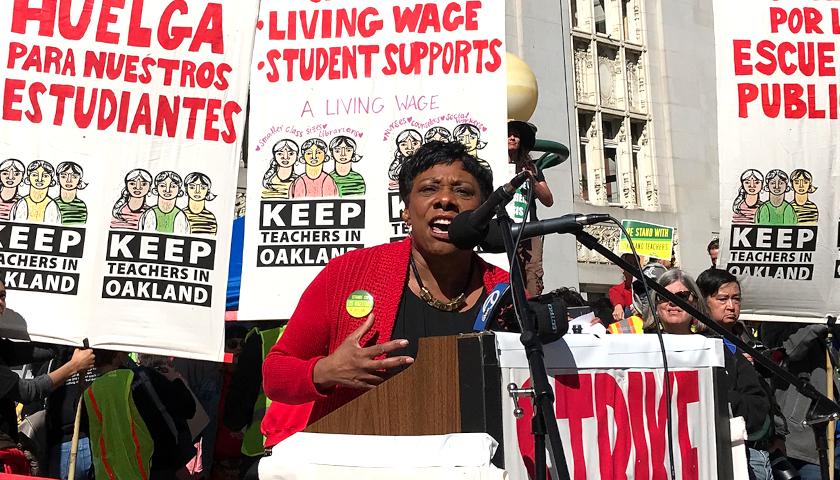by Peter Jacobsen
This week I have a question from Ryan who asks about economic development in America. Ryan says,
I was having a discussion with an acquaintance the other day over the causes of the post WW2 economy, more specifically why the middle class grew so large compared to the past and today. My claim was that the war devastated other countries’ industries, forcing other countries to buy from the US. This combined with the return of many men from the military to the workforce was the primary cause.
He claims that while those produced a large GDP, it did not explain why the middle class grew. Instead he advocates that the primary cause was the FDR policies of wealth redistribution, high tax rates, and strong labor unions. As such, he advocates for a return to those policies today.
What would be your perspective on this and where might one go to further research it?
In short, I disagree with Ryan and his friend on what led to the growth of the middle class. I don’t believe the New Deal or World War II led to economic improvement for the US. In order to explain why, I’m going to leverage the work of a great economic historian: Robert Higgs.
Before the War
One of the main reasons I think neither the New Deal nor World War II can explain the rise of the middle class is because it started rising before either of these events happened. In the book “The Transformation of the American Economy, 1865-1914” Robert Higgs argues,
“the central feature of the 1865-1914 era in American economic history was economic growth–a rapid and sustained rise in output per capita that constituted the return on investments in health, skill, and knowledge.”
Higgs uses a myriad of quantitative historical data to make this argument. I’ll do my best to summarize his findings, but the curious reader would do well to click on the link above and read the whole book!
Growing Income
One piece of evidence demonstrating the rise of the middle class in this time period is growing income. Higgs documents that in the 50 years following the end of the Civil War, the total output produced by the economy (as measured by Real Gross National Product) increased by an average rate of greater than 4% per year. This even outpaced population growth for a per capita increase of 2%.
This amounts to an approximately triple amount of production (and income) over that time period. Readers familiar with modern economic growth numbers may scoff at a 2% per capita growth as normal, but, as a reminder, this was the largest sustained period of economic growth in history. To quote Higgs, “never before had such rapid growth continued for so long”.
Aggregate measures like Gross National Product aren’t perfect ways to measure economic progress, but large differences over long periods of time reflect a pretty clear picture of economic growth. This growth was the beginning of a higher standard of living for all.
Growing Capital Stock
As Higgs highlights, one of the sources of this growing production was an increase in the goods which laborers use to assist in production. Economists call these capital goods.
Capital goods are important for income because they improve the productivity of workers. If workers can generate more revenue for their company in an hour, employers will value that hour of their time more, and will thus pay more for the labor. From 1869 to 1909, Higgs, citing Nobel prize-winning economist Simon Kuznets, documents the total material capital stock (net of capital destroyed) increased from $27 billion worth to $165 billion worth (in 1929 dollars).
This is a staggering 6-fold increase which left each worker double the amount of capital accounting for increases in the population. With soaring productivity comes soaring incomes.
Material goods aren’t the only investments you can make to improve productivity though. Education, which economists often refer to as human capital, can also improve productivity. The positive trend shows for education too. From 1860 to 1900 total spending on education increased significantly both in total terms and as a share of GDP.
Cities, Health, and Invention
Oftentimes modern critics of capitalism, both on the right and the left, romantically look back at a time where a larger percent of the workforce was in agriculture. It’s easy to wax poetic about life in the country if one forgets agriculture before the modern era was often times subsistence farming characterized by starvation, disease, and little to no protection from the elements.
Although I’m not a city person myself, it would be crazy to ignore the gains to society made when people moved from subsistence farming to denser cities where gains from specialization and trade can be better utilized. And, like those who rushed to cities, I likely would have wanted to be in one at the time.
As Higgs points out, the time period in question was one of massive urbanization. In 1870, the percent of the population residing within an incorporated place of at least 2500 was only 26%. By 1910, it was up to 46%
In the same time period, the number of incorporated places over 2500 residents increased from 662 to 2262. Cities with populations over 100,000 quadrupled from 14 to 49 cities.
The biggest downside of cities leading up to that time was increased spread of diseases. But no more. Despite the growth of cities during this time frame, the number of deaths per 100,000 people due to diseases such as Tuberculosis, stomach and Intestinal diseases, Scarlet Fever, Typhoid, Typhus, Smallpox, Cholera, Diphtheria, and Yellow Fever fell in the largest major cities (New York City, Boston, Philadelphia, and New Orleans).
The decreases in each are staggering (Table 3.3 if you want to check it out in the book). Why? Much like growth in knowledge and productive capacity improved economic outcomes, it also improved health outcomes.
It’s likely that innovations exploded outside the healthcare industry as well. Higgs estimates urbanization combined with other factors meant a larger number of patented inventions.
Finally, just because farming in the 19th century was more difficult than today, that doesn’t imply it was without improvement. From1869 to 1909 the gross output of farms (in dollars) increased 172%.
Higgs’s research is clear. The preponderance of available data suggests that the growth that continued throughout the 20th century which enabled the rise of the middle class was already underway in the 19th century. The New Deal and World War II couldn’t have created the middle class because the creation of the middle class was well underway before either had taken place.
What is (and isn’t) the Real Cause of Growth?
Aside from the history not working out in favor of the initially suggested hypotheses, they have theoretical problems as well.
While it’s true that war can increase aggregate spending (and therefore GDP numbers), consider what happens with the spending. It purchases machines like tanks and artillery which are sent overseas and promptly blown up.
Does blowing up millions of dollars worth of resources sound like a good way to fix the economy? When you look past the temporary fluctuations in economic statistics, it’s clear that these policies can only be destructive. If that weren’t the case, the US government could improve the economy by building drones which blow each other up over the ocean!
I will note Ryan’s point was more nuanced as he claimed the war forced European countries to buy from the US. But if that’s the case, it means US consumers also lost the ability to experience the gains from trade of buying from Europe, and if European industry was so devastated, European incomes would be too, meaning they wouldn’t be able to buy that much anyways.
The mistake that increased spending in itself causes economic growth is known famously in economics as the broken window fallacy. When we spend money on a war, it’s easy to see the upsides such as income to steel manufacturers who build tanks. What we don’t see is the downsides (the alternative way we could have used the steel rather than blowing it up, for example).
There are many good treatments of the broken window fallacy, but the best recent book I’d recommend is economist Caleb Fuller’s book No Free Lunch. In the book, Fuller even covers the fallacy that World War II improved the economy.
Now we can move on to FDR’s “New Deal”. As a reminder, we know it can’t have created the middle class, because that process predates the New Deal. But what are the theoretic shortcomings? Addressing this would be an article in itself (Higgs himself has written a good one on this), but I’ll do my best to address the basic issue.
The New Deal was a set of government policies which transferred resources from some groups to other groups. Transfers, by definition, do not create more wealth. They simply move wealth from one person to another. At best, you take $100 from Peter and use it to pay Paul. Economists call this sort of action zero-sum.
In reality, transfers tend to be negative-sum, because Peter has an incentive to try to stop Paul from taking his money. So instead of doing $100 worth of work and losing it all, Peter takes a day off of work, makes $100 less dollars, and he has nothing to take. This simple example doesn’t even consider the fact that people spend resources to lobby for (and against) transfers.
In summary, during a transfer some wealth is transferred from Peter to Paul, but some wealth is destroyed or never created because of the transfer process.
The modern middle class was not created in the context where total wealth stayed the same and the New Deal just divided it up more evenly. No, the middle class in America was created in the context of growing wealth. The poorest, the richest, and everyone in between have gotten richer in America over the last 200 years.
What was the source of that wealth creation? How did the middle class arise? In a word: institutions. Specifically, the institution of private property rights grew in security and prominence throughout the 19th century.
When two people are free to own goods and exchange them for mutually agreed upon prices, the result is both people are better off (otherwise they would not have agreed to the exchange). This sort of situation, in contrast to government transfers, is a positive sum result.
Further, when private property rights are protected, individuals have an incentive to use their property in ways which improve its value to others in society so they can participate in these mutually advantageous trades.
Throughout Higgs’s book he highlights key legal decisions which enshrined property rights and freedom of contract solidly in American law throughout the 19th century. As a result, Americans worked and improved the country around them and, in doing so, paved the way for the existence of the middle class.
– – –
Peter Jacobsen teaches economics and holds the position of Gwartney Professor of Economics. He received his graduate education at George Mason University.
Photo “Franklin D. Roosevelt” by FDR Presidential Library & Museum. CC BY 2.0. Background Photo “U.S. Capitol” by Carol M. Highsmith.




